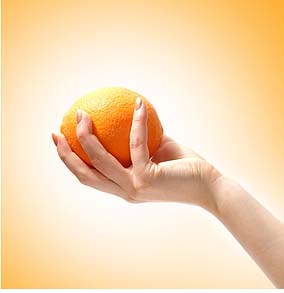Orange peel, hail damage, morse code, cottage cheese, dimple appearance, that ugly bumpy area – whatever you want to call it, its cellulite.
Cellulite is often viewed as a dirty word in the health, beauty and fashion industries. It isn’t the most pleasant looking and is a frustrating problem for women who have it. But what exactly is it and what causes it? Let’s take a closer look.
Fat is made up of cells called adipocytes, their main function is to stockpile energy reserves. These cells accumulate energy in the form of lipids, which they release back to the body on demand. These adipocytes are present as small accumulations of fat that are walled off by fibrous connective tissue. These fat nodules spread in clusters between the dermis (the tissue that makes up the deep layer of the skin) and the muscles. When the adipocytes accumulate more energy than is consumed, they tend to grow considerably in size and fat begins to accumulate.
On the surface of the skin of the bum hips and the thighs in women, we can often see multiple, more or less deep depressions that are commonly referred to as “cottage cheese.” This appearance is caused by inelastic fibrous tracts in these areas, which like little cables attach the envelope of the muscles to the deep surface of the skin at the depressions, with the fatty tissue bulging in between (like a quilt!).
When the body consumes fewer calories than it absorbs , the fat reserves increase. This cellulite is compartmentalised by a fibrous connective tissue net. When this net is compressed, the lymphatics and blood vessels that run through the area are also compressed, the organic exchanges are slowed down, and the blood does not readily reach these fatty quilted areas to remove the stockpiled fatty acids. The localised fat becomes difficult for the body to remove and unfortunately even intensive training may not remove it completely. For example, it is not unusual for a woman on a strict diet and exercise to lose weight, lose her breasts… but keep her hips!
The hips, bum and thighs are the most common areas of cellulite production due to how this fat is utilised. Fat on any part of the body is governed by metabolic or hormonal needs; the latter determines if cellulite appears. The hips and thighs are areas more under the control of hormones in women as they are reserved for pregnancy and lactation. This is why these are the most common sites for cellulite in women and in rarer cases men. In fact, cellulite is a natural process in females induced by the hormone oestrogen.
The major function of oestrogen is to break down the collagen in the cervix during birth to allow the passage of the baby, a process that begins at puberty and continues to well after menopause.
Diet and exercise may reduce the appearance of cellulite (for some women, it can look worse with dramatic weight loss) unfortunately it is not a miracle cure. There are none.
It is not impossible to reduce the appearance of cellulite, however it is quite challenging and often frustrating and will not get rid of it all together. However, after implementing a healthy diet and fitness regime you may find yourself feeling better within your own body.
Accept its flaws and work towards having your body in its best shape possible so you not only look good but reap the health benefits too.
